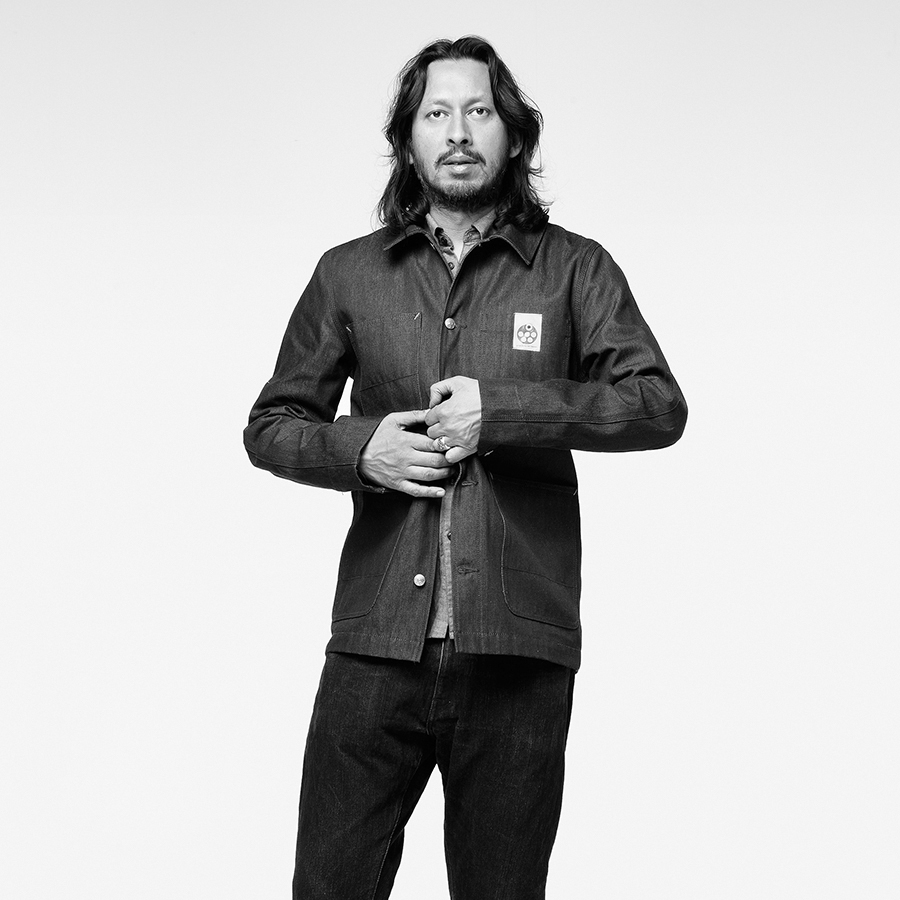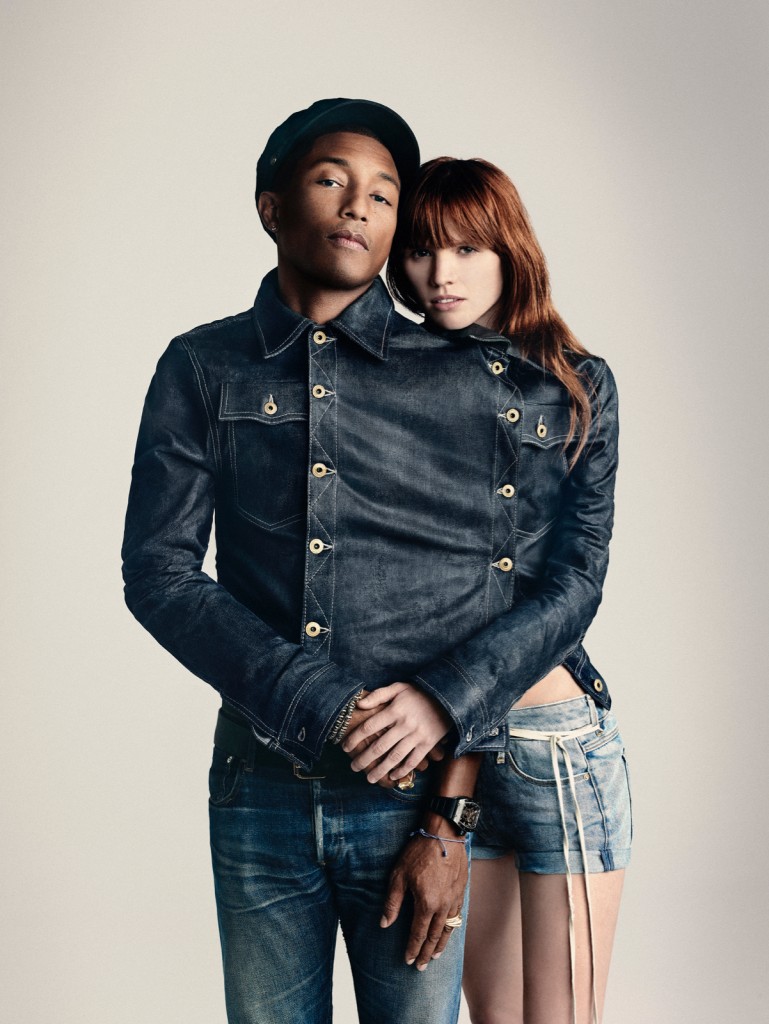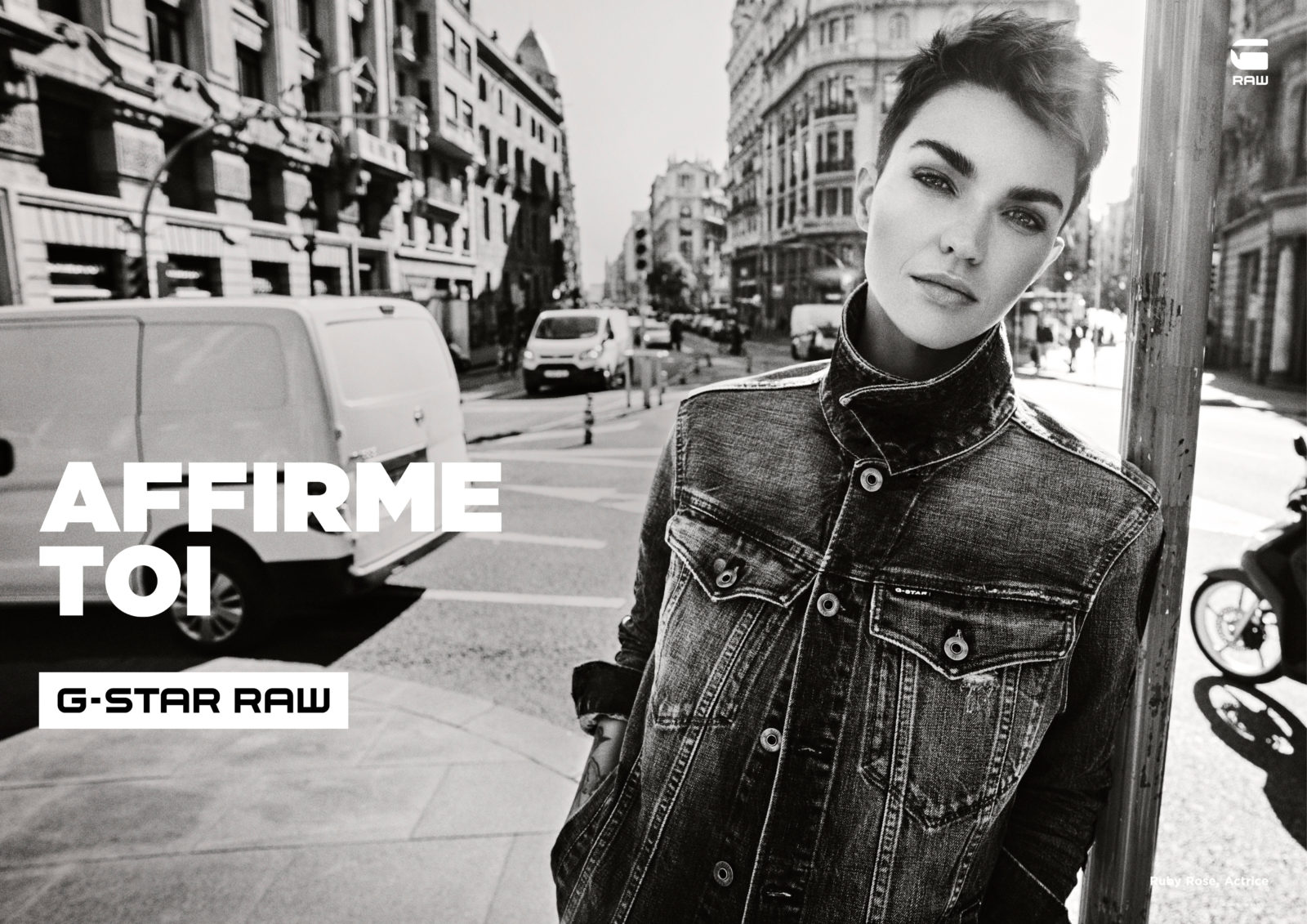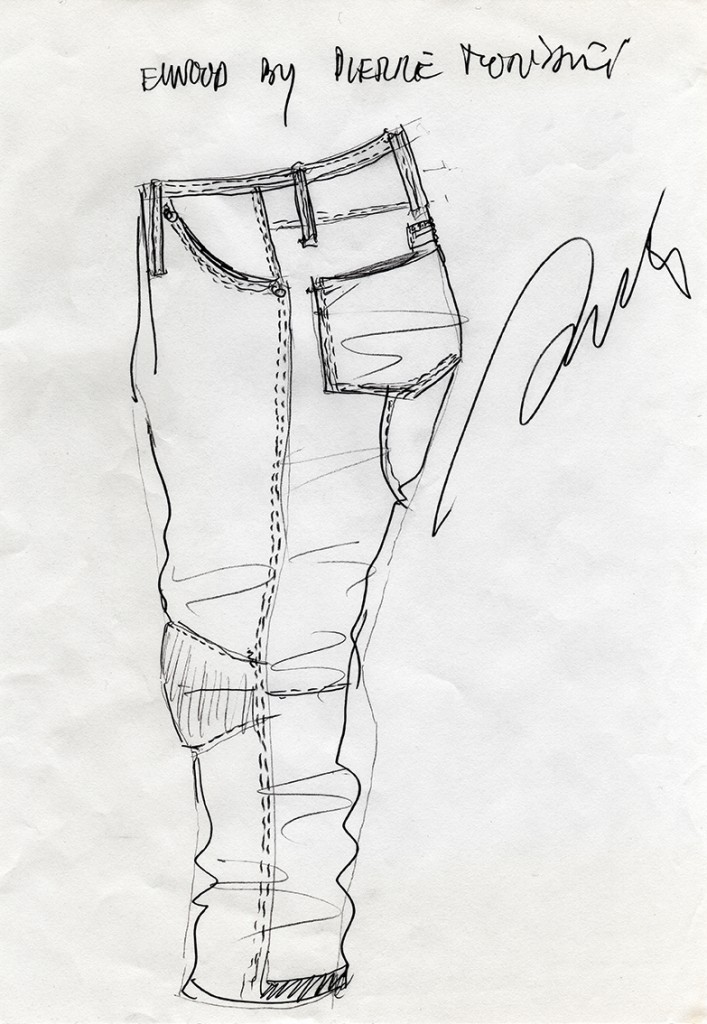SHUBHANKAR RAY ON DISRUPTION
By Crash redaction
SHUBHANKAR RAY, THE GLOBAL BRAND DIRECTOR OF G-STAR RAW, TALKS TO CRASH ABOUR THE DIGITAL EVOLUTION OF THE FASHION INDUSTRY AND ITS IMPACT ON FASHION BUSINESS MODELS, AS THE DENIM HOUSE CELEBRATES THE 20th ANNIVERSARY OF ITS ICONIC JEAN: THE ELWOOD 5620. IN AN ERA WHERE RAPID CHANGES ARE RESHAPING THE MARKETING AND COMMUNICATIONS STRATEGIES OF MAJOR BRANDS, THE ONCE PREDICTABLE FASHION BUSINESS IS NOT SO PREDICTABLE ANYMORE. HOWEVER, THIS MAY ALSO PROVIDE AN OPPORTUNITY FOR NEW APPROACHES AND REINVENTION, AS THE SEEDS OF THE STRONGEST INNOVATION OFTEN LIE IN TIMES OF CRISIS.
Interview by Armelle Leturcq
The iconic G-Star Elwood 5620 is celebrating its twentieth anniversary this year. Can you talk about the product’s evolution?
The Elwood 5620 is twenty years old, and we’re celebrating an icon because it has become part of jeans culture. The thing with Elwood is that we were inspired by the world of industrial design, where function comes before form. G-Star is raw which means uncut, unprocessed, and pure. Our values and mentality are based on searching for different combinations: combining opposite things together. For us, modernity is key. This is different from the denim business per se, which is based on heritage and nostalgia. When Elwood was born the denim industry was about flat cuts and sewn manufacturing. G-Star pioneered a 3D approach to designing denim, which gave the market a new style of jeans with a shape based much more on anatomy. It is in fact closer to tailoring than mass-manufactured products. The Elwood 5620 was really about combining authentic details with very modern styling: something from the old with something from the new, inspired by a pair of motorcycle pants. This introduced a type of 3D thinking to denim, which was unheard of. The Elwood 5620 is a product launched in 1996, and the denim market was very different then. We’ve had twenty years of evolution. At the beginning we sold 0.001 million pairs, which meant it was very different from the market and difficult to sell, so it had to cross over with time. Ten years later, G-Star sold 13 million pairs of the Elwood 5620, so somebody obviously liked it as time went on. For us it meant that the market needed something different. In the last ten years, we’ve had a lot of pick-ups with celebrities wearing the Elwood 5620 and key retailers selling it. Celebrities are the most important salesforce. Today, we’re at 20 million pairs sold. In 2016, everything is about the Elwood 5620. For the twentieth anniversary of the product we decided to unveil a limited edition every month of the year with various collaborators that we’ve worked with for a long period of time. We kicked off the program with the Elmwood Moto, in homage to our Head Designer, Pierre Morisset. For the following month, we brought out Pharrell Williams’ version of the Elwood 5620, which is made from recycled ocean plastic. We also count Marc Newson for this project, among other long-time collaborators.
You were at Levi’s and Camper before moving to G-Star. How would you describe your career and the evolution of the fashion industry?
Yes, I worked at Camper for six years and previously at Caterpillar and Levi’s. At that time, my mentality was much more like the most modernistic of today’s football managers. I used to live in Barcelona and I knew Pep Guardiola, who is still a successful football manager. I noticed an interesting thing he said in an interview, in which I recognize myself: to be a football manager you have to get into the industry, change things, be successful and stay in this position for three years, then move on. After that, it’s better to go do something new. I personally believe that you have got to stay long enough in a company to make a body of work that changes something or makes a difference, if you have a very clear vision and enough time to make it. At the same time, when something is successful then it can have a long life cycle because the idea is strong enough that you will be able to reinvent it and reframe it for a long time. It means it has a long aesthetic and functional life cycle because it is helping the business to grow. Going back to my time at G-Star, in a way I cannot believe it has been almost ten years. It has gone so fast. I feel I met the owner Jos van Tilburg at the right time in the brand’s evolution from challenger to player, when he was open to transforming his house into a global brand, and I felt there was an opportunity to make a more modernistic kind of clothing firm. I knew that was the right time to make changes, the market was changing very fast and moving out of 20th century culture where everything was driven by industrial economics. That evolved into a new type of digital economics that was driven by the attention economy and accelerated culture, so high speed operating on attention. Knowing it was moving in that way, it was an interesting moment to try new things. I remember when I was doing the first G-star Raw show in New York I was so nervous because I didn’t know what I could do with denim, to elevate it, to put it on a more cultural path, to add references, as it is a commodity business.
But later on you decided to stop the fashion shows…
Yes, we did stop a couple of years ago but then we went back to do the Raw for the Ocean show with Pharrell during New York Fashion Week one year ago. It is not that we necessarily decided to stop the fashion shows per se, but we saw a technology impact in the world of fashion. So we thought the biggest influence, the biggest impact in fashion would be tech in terms of how fashion is seen and sold. For our brand, that meant increasing the technology inside the product as a priority. Raw for the Oceans is a good example of this process, because this project is based on recycling ocean plastic inside the denim. It is that additional tech inside that makes our products more sustainable and eco-friendly.
Is RAW For the Oceans a long-term project?
It represents a way for us to replace polyester and plastic inside our business model. That’s the technology we are aiming at to change the core of our products. On the other hand, technology influences how fashion is seen, sold and distributed. In the past, products would be seen in a fashion magazine, then sold and distributed to you physically in a shop. Today that whole process has changed because of the impact of digital. Understanding this means understanding a new form of retailing. Today, one of our reasons for stepping away from New York fashion week was primarily to focus more attention on the impact of digital and retailing. In this effort, we tried to enhance the tech aspect of our products and develop our e-shop at the same time.
Do online sales make up a large portion of your revenue?
At G-Star RAW the e-shop is in the top channel of our distribution. We have one e-shop for all over the world, but product distribution is localized. We also wanted to focus on the impact of how clothing is shown. I believe you can show a lot also on the Internet, to a point where maybe you don’t need the traditional fashion show which is a closed, elitist event reaching an insider audience; whereas the future is geared more towards open consumer events with a high digital reach that makes them more democratic. A good example of this shift is Kanye West’s recent fashion show for Yeezy, which was also for the consumer and so reached 20 million people by live streaming!
In terms of communication, do you think you will advertise more on digital media?
I think the whole thing will change: digital will become a much bigger media vehicle for all brands. The impact of this new way of advertising is another debate. But nobody really knows the answer to that yet. I feel there are a lot of changes happening in the world and these changes have to do with the impact of tech in fashion.
Luxury brands, like Hermès for example, have a strong digital presence…
For luxury brands, digital is something very different: for example you cannot buy Chanel products online due to their high value. In addition, they only have their own brand’s channel due to their image, but they still have a huge Instagram following. For G-Star it is very different, today the most important sales for our brand are made online, and our main customer is Zalando.com, a German e-commerce platform. People have been talking a lot about this shift in the market, but we don’t really know what will happen next. I think it will just come out in a different form. For instance, today we make TV commercials, but really very few applications will be on TV. Applications are on the Internet. As you can see we are in a transitional phase, all these changes are playing out in the fashion world now due to tech and speed changing scale and driving success!
Are you working on G-Star’s digital strategy?
There are a lot of challenges. In any situation like that there is always opportunity for innovation. I truly believe the seeds of opportunities are genuinely inside crises. It is a moment for new brands. Right now for instance, I focus much less on denim competitors than before and much more on tech companies. In a way, it is about breaking codes in your category, inventing new codes, and then looking outside. Currently, I am looking into companies disrupting the current market. Uber could offer an example, and its growth is the result of its innovative approach.
I would like to know more about your brand’s evolution over the last ten years…
We have always taken an approach based on innovation and pushing forward. We are very conscious of the importance of the new. In a way, the evolution of G-star already took a step forward when I met Jos Van Tilburg. In the beginning we took on celebrities, creating a completely different kind of campaign. That was already big step. I had to get very interesting celebrities and come up with interesting ways to craft a backstory.
The G-Star codes always seem to stay true to the brand…
That’s what I liked about the brand when I decided to work for G-Star: I thought it was a very clean environment to come into. The brand’s message is very consistent. If you keep the consistency in some areas you can really reinvent the image part. You could make a new sort of new DNA; you tweak and change the forms. If you look back, you could say there is something uncut and raw in our ad campaigns shot by Anton Corbijn, because of large format negatives, black and white imagery, etc. With Pharrell it looks different: it is much younger with fun colors. But the idea of raw and uncut is still evident there.
Along with that kind of progress we need to consider that even when people move from one world to another, the world that’s left is also an opportunity. Everybody knows that the media money is going away from magazines into online advertising. For instance, when I was a teenager billboards were much more important than billboards for my children. When I saw a billboard that was designed for me I noticed it, I doubts that my kids notice billboards because they are plugged in in a different way. At the same time, although I don’t know the answer, it can be a good strategy if you are the only brand using the old media. When everybody goes to the same place it might be interesting to go a different way…
It’s true that some brands have stopped advertising in magazines…
True, this is a debate going on for the last year and an half and I fully understand that this is a big challenge for independent magazines, which get a lot of support from print advertising. I don’t know where the resolution of that is, it is very tricky to say what will happen in the future for the press. The market is hugely competitive today, and also for brands. If you consider the sportswear business, everybody thinks it is – and always has been – a fight between Nike and Adidas. Most people generally think they are the same, but this is untrue: Nike is way bigger. I read a very interesting report the other day on the sportswear market and Nike was listed as number one. Number two, two years ago, was Under Armour. They used to make all of the technical undergarments for sports players. What is incredible is that most people I talked to would never have heard of it. Also, today the second biggest athletic footwear brand in the USA is Skechers! Even for people in the industry this is a surprise. That must tell us something: the market has become extremely competitive. It is also very interesting how young people connect to the brand. I see this everyday with my teenage kids. It is very important to listen to the new generations, as they know exactly what they want. The predictive behavior of the fashion business is not so easily predictable anymore. Change is happening.
Change is happening among luxury brands, as well: just think of Balenciaga and Gucci, for example, both of whom recently appointed young designers as their creative directors…
Yes, of course. Normally the designer would be the media amplifier. Today brands prefer a designer who is more dedicated to the product and not necessarily to the brand, whereas in the past you could argue that Tom Ford’s approach was more about the brand than it was about the product. This shift is very interesting, there is a lot going on in the world of fashion. For instance, the brand Everlane is one of the newest models to me. Its business model is revolutionary: this brand makes good basics only sold online but at affordable prices, while showing the transparency of their production processes. This is revolutionary in the sense that it makes the brand stand out of from its competition. That is a good example of how to disrupt fashion by become more transparent and real!
Interview from Crash #75











